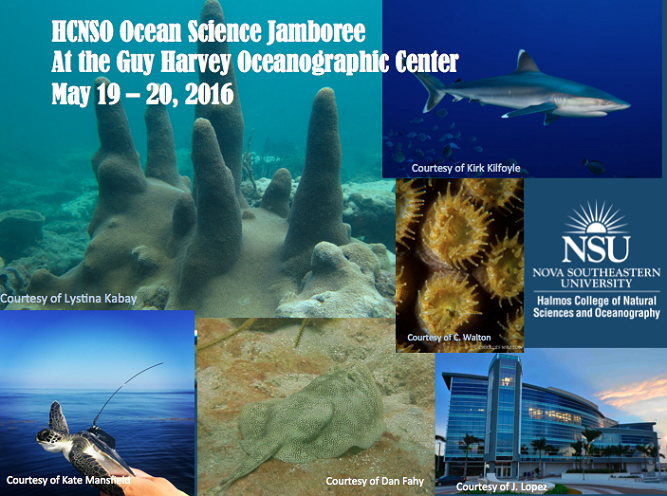Title
Food Web Dynamics and Oceanic Processes
Location
Guy Harvey Oceanographic Center Facility
Start
5-19-2016 11:00 AM
End
5-19-2016 11:15 AM
Abstract
Production of carbon in the ocean realm, via growth and reproduction, is predicated by the adage “you are what you eat” as well as the body of water in which you live. Elemental components of food webs can be deemed both beneficial and harmful to biologic organisms. Stable isotope ratios can be used to trace not just trophic position in a food web but also geographic location and, depending on the tissue turnover rate, when. Tissues have differing turnover rates or are inert which allows a timeline of diet and location to be reconstructed with isotopic ratios. Apex predators, particularly large vertebrates such as marine mammals and fishes, provide a composite of marine food webs as well as the oceanographic factors that influence marine production. Plants and animals also incorporate contaminants such as heavy metals in their tissues which are also passed through food webs and oftentimes bioaccumulated in tissues. Pinnipeds and fissipeds, including seals, sea lions, walruses, and sea otters, are used as bioindicators of production and oceanic processes affecting food webs.
Food Web Dynamics and Oceanic Processes
Guy Harvey Oceanographic Center Facility
Production of carbon in the ocean realm, via growth and reproduction, is predicated by the adage “you are what you eat” as well as the body of water in which you live. Elemental components of food webs can be deemed both beneficial and harmful to biologic organisms. Stable isotope ratios can be used to trace not just trophic position in a food web but also geographic location and, depending on the tissue turnover rate, when. Tissues have differing turnover rates or are inert which allows a timeline of diet and location to be reconstructed with isotopic ratios. Apex predators, particularly large vertebrates such as marine mammals and fishes, provide a composite of marine food webs as well as the oceanographic factors that influence marine production. Plants and animals also incorporate contaminants such as heavy metals in their tissues which are also passed through food webs and oftentimes bioaccumulated in tissues. Pinnipeds and fissipeds, including seals, sea lions, walruses, and sea otters, are used as bioindicators of production and oceanic processes affecting food webs.


